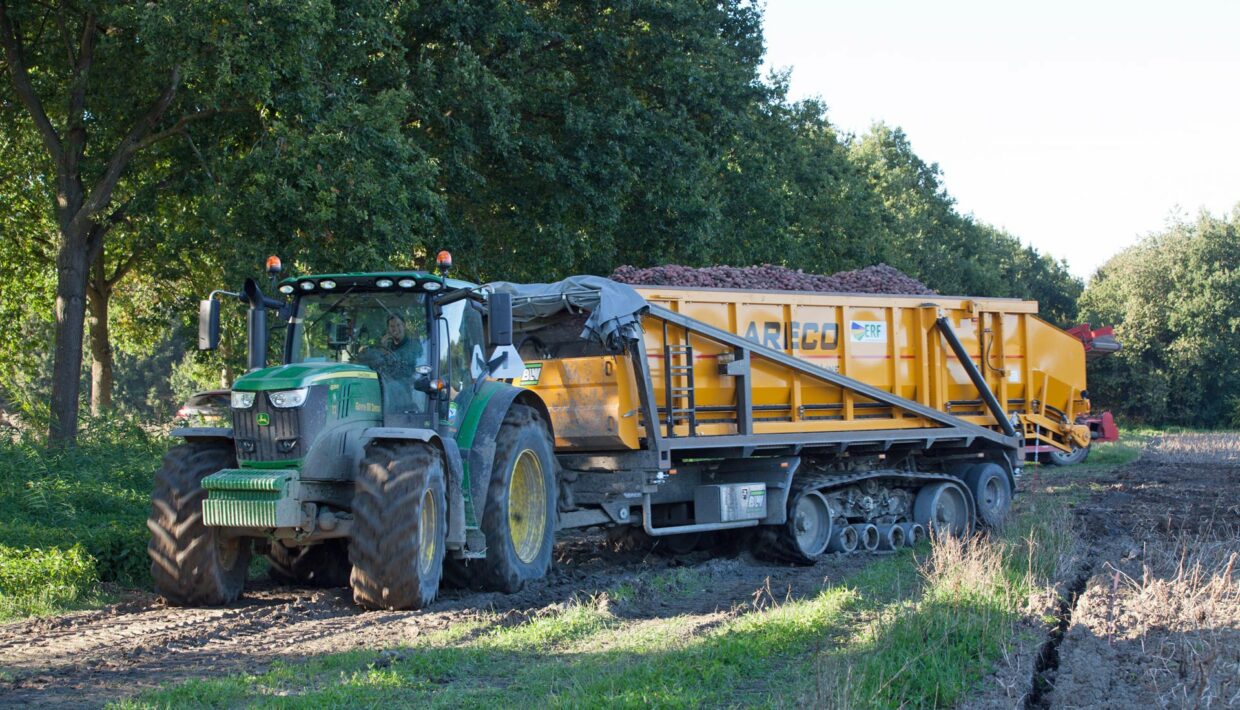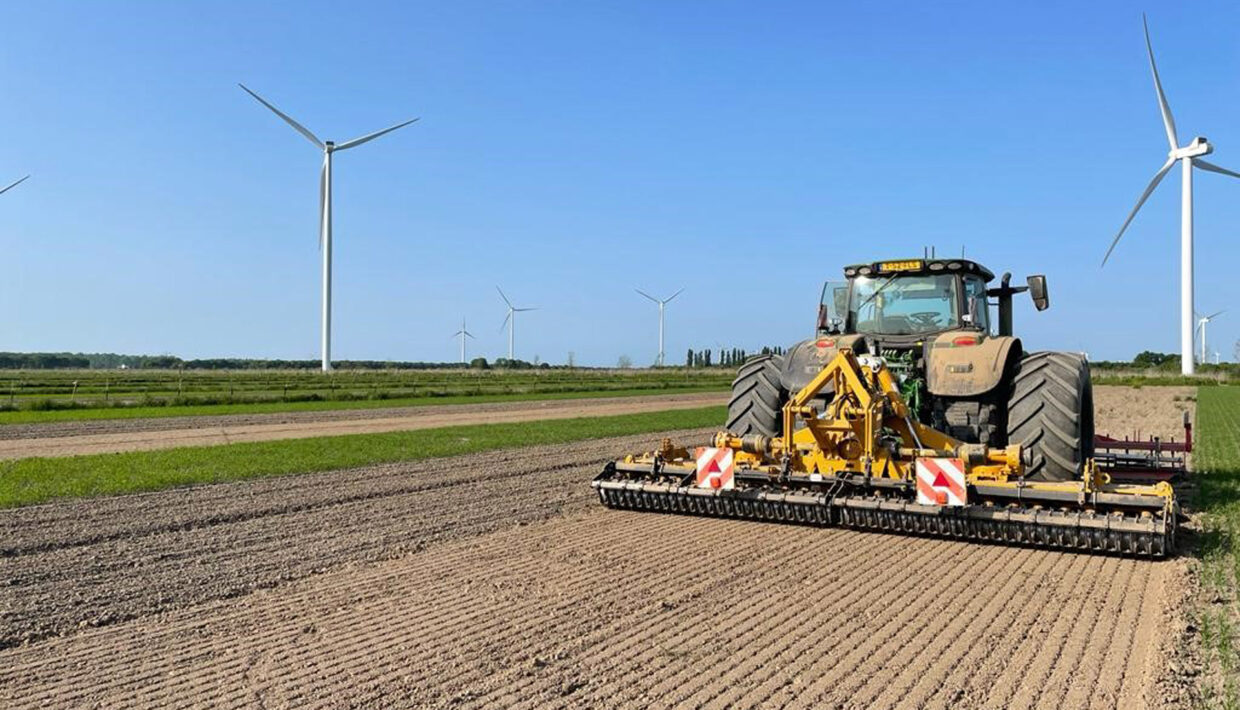It is a quiet period at BV Erf. Most of the crops have been gathered and the cover crops are growing. In the barn, a big self-driving harvester is being prepared to lift beetroot, the last crop still in the field. Erf manager Jaco Burgers points to a row of empty stores: “Soon they’ll be filled with the produce from 75ha of beetroot.”
The sound of building alterations can be heard in the background. That’s because here, in Zeewolde, work is ongoing on a single central Erf site, including offices and reception space. Jaco is looking forward to being even closer to work soon. “We are still split over multiple sites which have developed historically,” he explains. “Our origins lie in the National Office for the IJsselmeer Polders. BV Erf leases land from the state, which it works until it is needed for urban growth or infrastructure. So this reserved land around Almere, Zeewolde and Lelystad has never been leased or sold to farmers since reclamation (from the sea).”
Strikingly, all that land is managed organically; some ever since the polder was first taken into use in the 1970s. The business went fully organic in 2006. “Around that time, more and more became technically feasible, especially in terms of weed control,” notes Jaco. “You had accurate GPS systems and consequently new developments in hoeing systems. We were always closely involved in their development and testing. And we still are.”

Seasonal traffic lanes
That said, weed control remains priority number one. “There’s more to that than good equipment. Good weed control starts with level ploughing, because the foundations have to be good,” he explains. “We also use controlled traffic systems; we traffic the same lanes from initial cultivation to harvest.” That makes it easier to travel in wet conditions, and protects the rest of the land from compaction.
“All the machines we use in the spring are six metres wide. We can keep on top of most weeds with precision weeding equipment and camera-driven hoes. And anything left over needs to be done manually.” Depending on the growing plan and the season, Jaco’s talking about around 25,000 manual weeding hours.
Erf prefers to use caterpillar tracks for the heavier work, to minimise the load on the soil. Potatoes are planted with an all-in-one system, with the seedstock planted and ridged in a single pass. It is one of the tasks undertaken by the John Deere 8XR, the first in the Netherlands, which Erf purchased last year. It replaced an older RT crawler. “The advantage of the 8XR is that it handles itself like a wheeled tractor and you can suspend something on the front hitch. We use it for all the heavy draught work.”
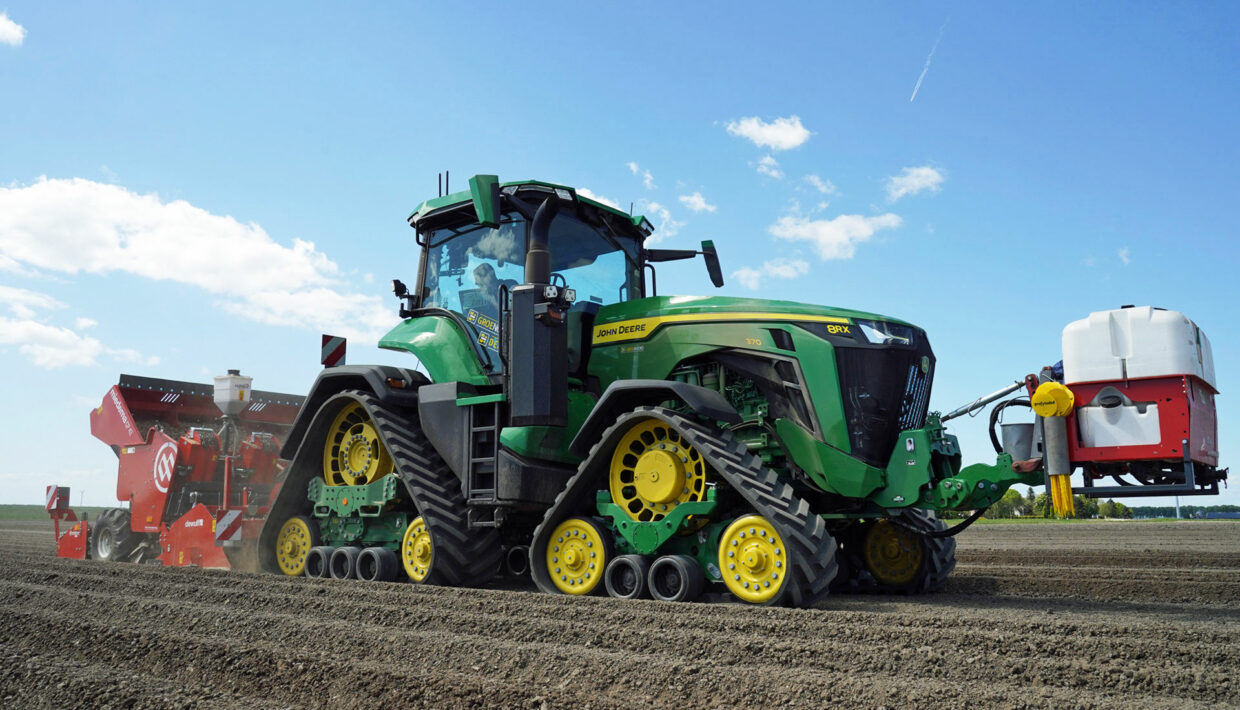
Staying ahead of potato diseases
For Jaco, proper care of the soil is the first step towards a healthy crop. “A crop must be able to grow steadily, then it’s less susceptible to diseases and rot. You often see that organic crops have a lead in the spring due to a wider rotation and the absence of herbicides. But it is tougher later in the year when the disease pressure rises,” he says. “Then we have to rely on healthy varieties with good disease resistance.”
The potato is one of the most difficult crops to grow organically. The disease phytophthora strikes virtually every year and can result in a substantial drop-off in yield. Organic growers had to kill their crops prematurely in 2023, because spraying to protect against disease is not possible. “That’s why we aim to have an early crop. That means getting onto the land early with varieties that ripen on time and have good natural disease resistance,” explains Jaco.
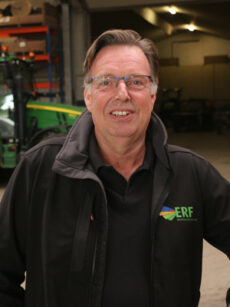
Staying ahead of diseases remains difficult, but our yields are stabilising.
Jaco Burgers
“You want to stay ahead of the disease as much as possible. It remains hard, but in our experience yields are more stable. I do think it’s concerning that the organic sector is highly dependent on resistant varieties. Nature is smarter than people, so resistance will be broken sooner or later. There is never one single solution. You’re never done.”
Breeding aphids
Erf has been strip cropping since 2017, to cultivate crops as ‘resiliently’ as possible. In this cropping method, narrow strips of different crops are alternated. The idea, on the one hand, is that diseases and rot spread less quickly. On the other hand, it puts natural predators in a better position, if they can find nutrition and shelter in the strip alongside. Studies are ongoing, but Erf has already adopted the method on 100ha. “It’s still a quest, but we do see the benefits. Measurements by Wageningen University and Research show that fungal diseases spread less quickly, for instance,” says Jaco. “If we suppose this results in a few weeks of extra growth, that’s already a big gain. The biodiversity has also increased enormously, due to the introduction of permanent flower strips. The strange thing is that, as well as natural predators, we also need aphids for them to eat. You need to create an army of natural predators ready to get to work in the crops. You create a balance.”
Strip cropping is a puzzle
Strip cropping is a big puzzle, however, because it needs to be practicable. “We started in 2017 with strips in three widths; 24, 12 and six metres wide,” explains Jaco. “Narrower is not possible, as we have to be able to use our existing machines. For the most positive effect, the trick is: The narrower the better. That’s why six metres has become the standard width.”
But strip cropping is a disaster in terms of planning and logistics, says Jaco, who is not afraid to call a spade a spade. “You have to take everything into account. Harvesting root crops is particularly difficult. If you want to dig up onions, carrots or parsnips the strip alongside needs to have been harvested already, or you won’t be able to drive the trailer there. We sometimes have to pick up everything from one side because the conveyer can only unload on one side. On the other hand, you can plan a grass clover strip where you have to drive a lot. You have to give it a lot of thought.”
Simply put, it demands extra up-front work. Another challenge Jaco mentions is irrigation. “You cannot really do much with a reel. I think we’ll have to start working with drip hoses in the future. But germination irrigation is often the most important thing for us, and you cannot do that with a drip hose.”
So there are plenty of challenges. But will we see strip cropping on a larger scale? Jaco feels it is still too early to answer that question. “I’d be the last to say it makes everything perfect. We are sticking with 100ha for now, because there is still a lot to learn.”
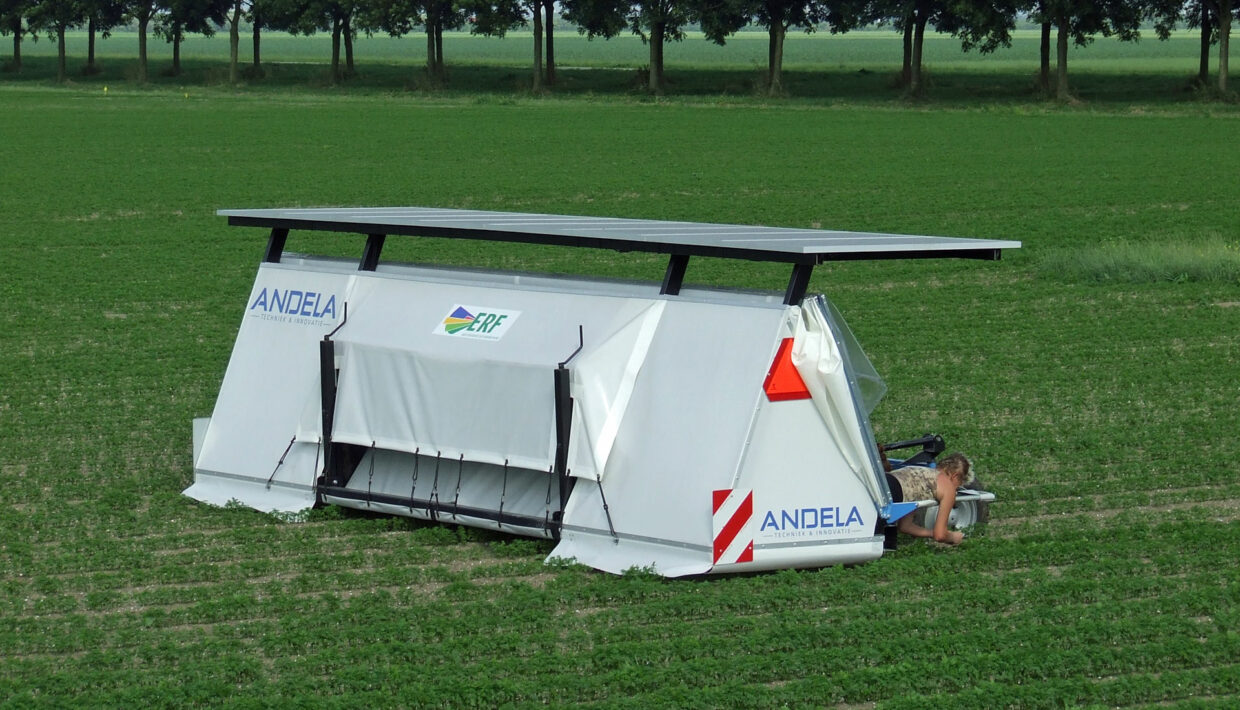
Mechanisation for labour savings
Another development Erf is investing time in is automation. This year the Ag-Bot appeared at the company, a 150hp robotic tractor. The machine is the first step towards lighter mechanisation and labour saving. “This year we used it mainly to prepare the soil for sowing and to gain experience,” explains Jaco. “I was amazed to see how much it can do. As long as you refuel it now and again it will just keep working 24 hours a day.”
Thinking further ahead, he identifies opportunities for automated sowing and hoeing, and for lighter machines. “You could even get to narrower strip cropping. But that doesn’t make people superfluous, by the way; you’ll still need supervision. All told, it’s still a stupid machine: If a plastic bag slips over a hoe it will not detect it.”
Close partnerships and long-term agreements
When asked about the biggest challenge in the years to come, Jaco does not need a lot of time to think about the answer. It is the sales side. The market for organic products was positive for a long time, but supply and demand have been out of kilter in recent years. “Historically, we are used to fluctuations. That it’s tense at the moment is partly because the number of organic growers has increased,” he explains. “The government is driving that, too. And more growers have come on board in other countries; France and Germany were always good markets for us. But local products are promoted to a high degree there. That means fewer export opportunities for the Netherlands.”
Erf endeavors to limit risks through partnerships – in the widest sense. As well as close partnerships with livestock producers, there are long-term agreements with buyers and other organic growers in the neighbourhood.
Also in the organic sector it is all about money. Especially now that people have less to spend.
Jaco Burgers
For example, they grow beetroot for a partner company which cleans and pre-cooks them, and puts them in consumer packaging. “Our partners have a direct line to the supermarkets,” says Jaco. “That is an advantage. And we have a strong position due to our large volumes. But that does not change the fact that also in the organic sector it is all about money. Especially now that people have less to spend.”
For Erf, it is all the more reason to keep innovating. On the one hand, to keep the cost price down, but on the other to ensure the organic sector stays ahead of the game. “The conventional sector is not standing still, we are well aware of that. But I continue to believe in the power of the organic sector.”
Company details
The origins of ERF (Exploitatie Reservegronden Flevoland) go back to 1996, when 3,700ha of the former National Office for the IJsselmeer Polders’ land was transferred to a foundation. The foundation holds the shares of BV Erf, which works the land until it is needed for urban growth or infrastructure. At 1,100ha, the company is the largest private organic farm in the Netherlands. The growing plan consists of 100ha of potatoes, 150ha of onions, 50ha of sprouts, 150ha of beetroot 300ha of grass clover and alfalfa, 100ha of maize for silage, 50ha of sweetcorn, 40ha of parsnips, 50ha of broccoli and cauliflower. There are 11 permanent employees at BV Erf, supplemented by self-employed people.


